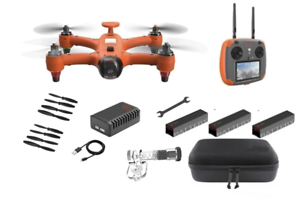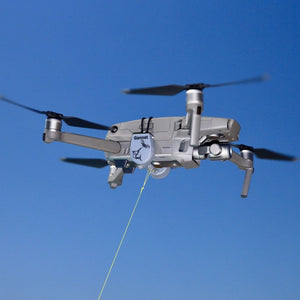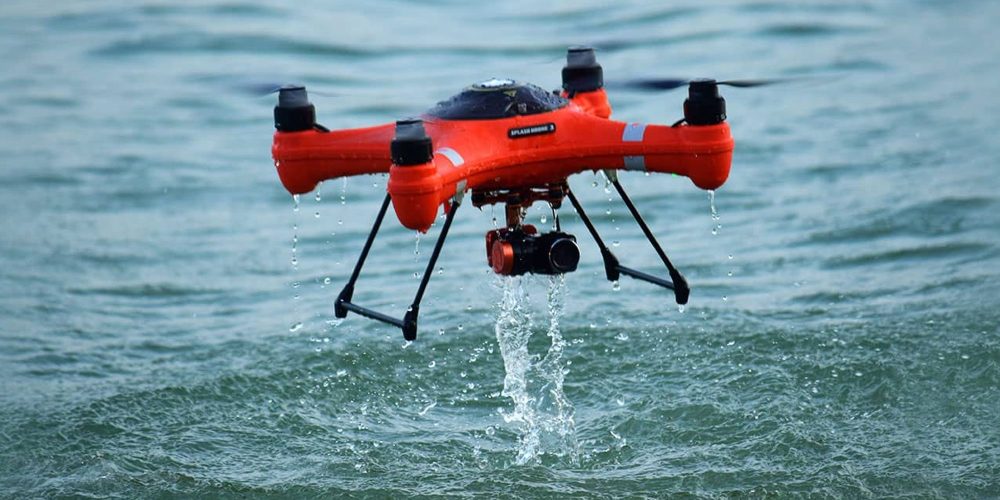
If you are an avid fisherman and live in Australia, you can now use a drone to get an aerial view of the waters around your property. Drones are equipped with many features including a GPS positioning and GPS receiver, a GPS transmitter, a GPS receiver, an angle-adjustable camera, and a mechanical payload. You can also buy fishing lines that you can use for fishing, which are designed to be extremely stable and secure. One such example is the SKY RIGGER drone.
SKY RIGGER, a drone fishing line, is available
The SKY RIGGER fishing line system for drones allows you fly fish and is flexible. The system has two rotating leg clamps that can be mounted on a wide variety of drone models. The release mechanism includes a bayonet connector and a cam-lock arm, which allows you to quickly unlock the line clamps. Sky RIGGER is unlike other drones and can be used for all types of fishing.
The SKY RIGGER has an automatic release mechanism for when a fish strikes your fly. You can also manually release your line with your rod or hand. This feature can be found on all models. It is highly recommended that you buy a Phantom 3 before buying the new SKY RIGGER. Here are some pros & cons of the new line.
It features a mechanical payload release
One of the most important features of a good drone is its mechanical payload release. Many of them are designed to allow the angler to release the fishing line with ease. Some models, however, do not include a release mechanism. Instead, the user must "yank" the fishing line to release the drone from the line. This can be awkward, especially for people who don't like using their hands to release line.

Another important feature of the drone's payload release system is its size. The payload should be able to release the drone's line when the fish is struck. It is important to practice catch and release fishing before trying this method, as you can't simply pull the fish to shore and release it back into the water. Many people have experienced good results using the DJI Phantom drone. However, this technology has not yet reached the level of fishing drones that are available on the market.
It features a GPS positioning device
Rippton is an Australian-Dutch joint venture that specializes technology-oriented products for fishing. Its goal is improve anglers' success by creating products that enhance the fishing experience. Rippton’s Mobula drone comes with a GPS position system and remote release. The Mobula is able to hold bait on the surface, resist kite clips and is environmentally friendly.
It is lightweight at just 3 pounds and can fly up to 18 minutes. It also has a high-tech GPS system, allowing it to be controlled from 2,000 yards away. The range is 1000 meters or half a miles. Intelligent flight modes are also available. It can take high-quality pictures of its surroundings thanks to its point of interest function. You can enjoy stunning views of fish through its high-resolution lens.
It features a failsafe function
Aerokontiki has an emergency feature that allows it to monitor the battery level and release the fishing line if necessary. In the event of a failure of the battery, it will return to dry ground so that it can continue its mission. It operates with industrial-grade flightcontrollers, and it can work anywhere without requiring calibration. You can also use this drone in watery areas.

FAQ
What is the maximum height you can fly a drone with no license?
The FAA has no limits on the maximum height a drone can fly. However, you must register your unmanned aircraft system (UAS), which includes the registration numbers, model name and weight, size, serialnum, manufacturer's name and date manufactured.
Can I fly my drone around my area?
Yes! These are also known as UAVs (unmanned aerial vehicle). There are many kinds of drones today. They range from small quadcopters, to large fixed-wing planes. The FAA recently updated its rules regarding commercial UAV use. You can now legally fly them to business purposes. But, it is important to note that UAVs being flown near airports can interfere with air traffic control systems. Before you operate one, you need permission from local authorities.
Traveling with a Drone?
Drones are increasingly becoming popular both for personal and commercial use. Drones are used for filming, photography, aerial mapping, search and rescue, as well as other purposes. A number of new regulations have been approved by the FAA for drones. These include registration, licensing, pilot training and insurance. These modifications will ensure that drones remain safe and secure for all involved.
What is the best drone to buy for beginners?
The DJI Phantom 2 Vision+ drone is a popular choice for beginners. The DJI Phantom 2 Vision+ comes with a 4K camera that allows you to capture high-quality aerial shots and videos. Its GPS system makes it easy to navigate the drone.
What laws are there regarding drones flying?
In the United States, the Federal Aviation Administration (FAA) regulates all aspects of drone operations. The FAA must issue a certificate before you can commercially operate a drone. First, you need to take a course about piloting and pass an exam. Final, you will need to pay a fee.
Where can a drone be purchased?
Many drones can be purchased online. Some people prefer buying their drones through Amazon, eBay, or Walmart. Others opt to purchase their drones direct from manufacturers.
Statistics
- According to industry research from ZipRecruiter , there are 10 cities where the typical salary for a Drone Pilot job is above the national average. (dronesgator.com)
- According to the multiple listing service (MLS), houses and apartments with drone photographs are up to 68 percent more likely to sell than those without pictures. (thedroneu.com)
- Research and Markets predict a growth rate of 51.1% over the next five years. (thedroneu.com)
External Links
How To
How to Fly Drones with Beginners
A drone can be used to fly remotely controlled aircraft for photography, surveillance, scientific research, hobby and commercial purposes. The technology behind drones has been around since World War II. DJI's Phantom quadcopters became commercially available in 2010. There have been many types of drones since then, including beginner-friendly drones like the Parrot AR Drone 2.0 and professional-grade multi-rotor crafts like the DJI Mavic Pro.
You can fly a drone in many different ways, including:
-
Remote control: This uses a remote control device that attaches to your hand and allows you control the drone along its flight path. There are two main types, On/Off switches (like radios) and joysticks.
-
Manual Control – This method lets users remotely control the drone by using a smartphone app. The app will give you instructions.
-
Autonomous Flight: This means that the drone will take care of all the piloting. The drone is able to fly autonomously, without the need for human intervention. It must have a builtin camera, sensors capable of taking images and data to enable autonomous flight.
-
Triggered Flight - This method is similar to manual control, except the pilot manually sets up a preprogrammed route, and the drone follows that route until it reaches the endpoint. Once the programmed route is completed, the drone lands automatically and returns back to the base.
-
Landing Gear – A few drones come with landing gear. This allows them land safely in the event of losing power or running out of battery.
-
Goggles - Some pilots wear goggles to protect themselves from debris while operating.
-
Camera - You can capture photos and videos with your drone from the air.
-
Obstacles - Some drones can be equipped with obstacle avoidance systems that prevent them from crashing into obstacles.
-
Speed – Some drones can reach speeds in excess of 40 mph.
-
Battery Life – Most drones will last 20 minutes to three hours depending on how powerful they are.
-
Distance - Some drones can travel up 30 miles depending on the model.
-
Power source - Not all drones can use an external power source. Others can run on internal batteries.
-
Weight – Some drones are less than one pound, while other models can be up to four pounds.
-
Size - Drones range from small devices that fit in one's palm to large crafts that weigh more than 50 pounds.
-
Price – All drones fall into a price category. These range from expensive models that cost thousands to affordable options that start at 100 dollars.